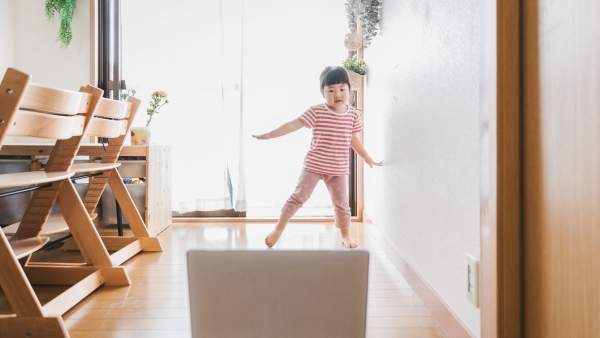we are charged with creating a space where every child feels a sense of belonging as well as safe and supported. Classroom culture, moreover, can support all facets of children’s social and emotional needs and development—children thrive in a community where their individual and social identities are valued and respected.
But in this period of virtual learning, many wonder how we can still build and maintain this sense of community. The answer, it turns out, lies in the foundational strategies for effective childhood instruction, which remain the same no matter what the context. Whether we’re teaching in a physical or virtual classroom, it’s all about how we interact with children.
FOUNDATIONAL STRATEGIES THAT ARE EFFECTIVE IN DISTANCE LEARNING
Build relationships: When you send the message that you care about each child, their interests, and what they are going through, and show them that you want them to do the best they can, you build community. In a classroom, you might pass around a ball and have each child share something about their families or their interests. In a virtual classroom, you can pass a pretend ball around (“I’m passing the ball to you, Trevor. Try to catch it!”) as a way to engage and share. Another option is to invite children to bring a favorite stuffed animal or object to share time.
Sing together: Songs and chants are excellent for building community—they help set a calm tone and support routines. If you are teaching in a virtual classroom, you can sing together as children log in or out, or you can sing as a transition between activities. When you encourage children to chime in, they hear all voices come together, building a community focused on the task at hand. Feel free to get creative when incorporating this technique, for example by adapting a familiar song, chant, or rhyme with new words to address a particular interest or need in your community.
Use movement: We all know preschoolers love to move. Even if you’re teaching online, your students should have opportunities to stretch and flex to improve their attention, strengthen their gross and fine motor skills, and enjoy themselves. Play group games such as Simon Says and Freeze Dance, where children can move their bodies, hear different musical genres, and have fun together. Make it more inclusive by having a policy of “no one is tagged out” even when they make a mistake. This adjustment will help to maintain each child’s sense of belonging in the community.
Integrate learning: It’s natural to incorporate numbers and number sense into kinesthetic activities. If children are doing jumping jacks, why not count out five of them? When counting actions with young children, be sure to slow down enough to clearly isolate each one. This supports children’s understanding that we count one number for one movement. It also supports their sense of cardinality as well as the number of elements in a set or group. Remind children that when they get to the last number, they need to stop counting.
Offer choice: When you offer children choices, you give them the opportunity to take responsibility and build confidence. Choice allows children to explore their growing independence, and it can be simple or more complex. For example, you might ask children which song they would like to sing, what topic they want to talk about, or what book they want you to read to them.
Practice problem-solving: Empower children to brainstorm varied solutions to relatable scenarios so they think through how they might go; then have them role-play those solutions. When authentic problems arise in the classroom community, support children in working through solutions together. In a classroom, you might problem-solve around sharing material, while online you might have the children come up with their own solution to talking over each other.
Also, consider incorporating puppets in your problem-solving scenarios—children relate to them and find them engaging. You can create two special puppets to use consistently when talking with children about problem-solving and other social and emotional skills.
By Michele Coulombe







